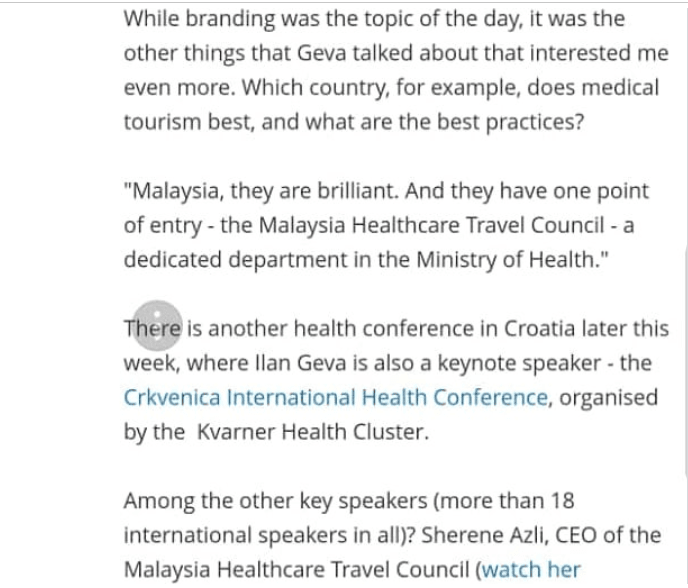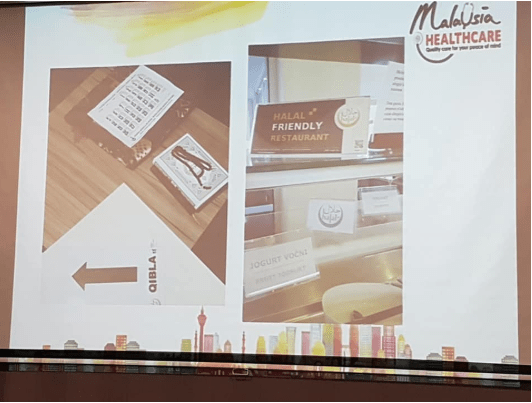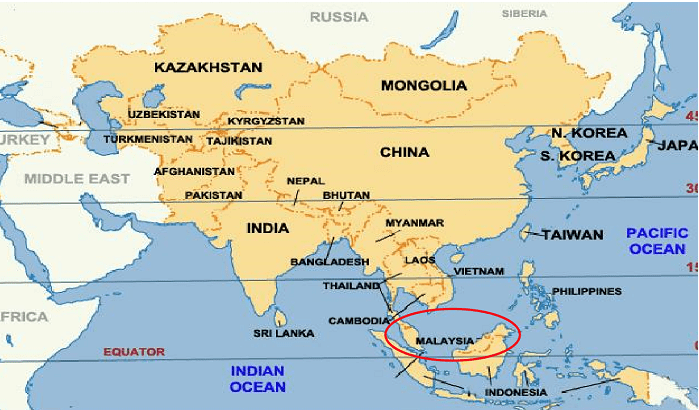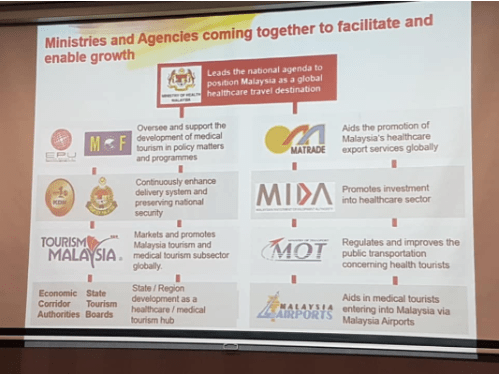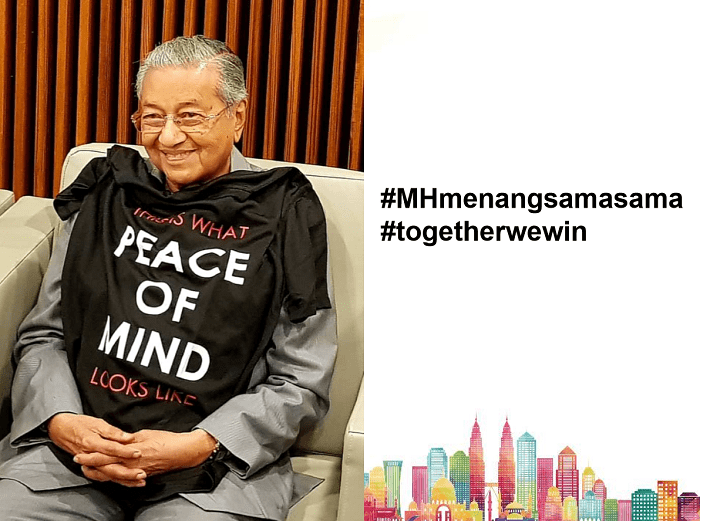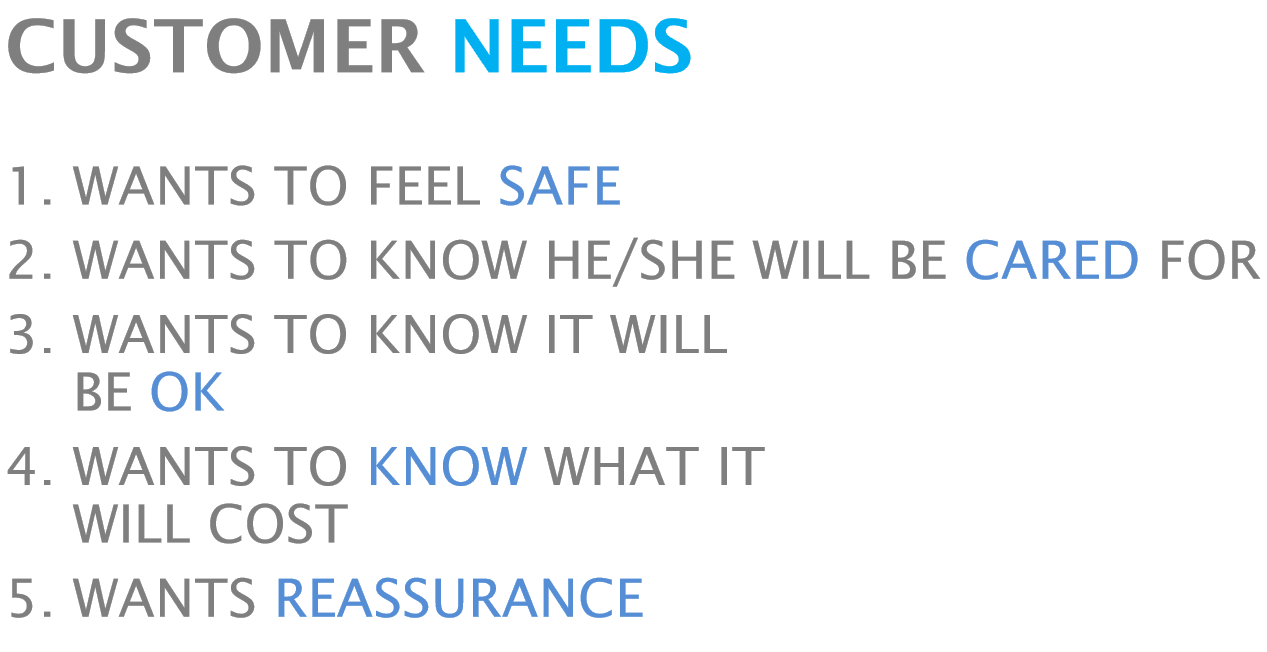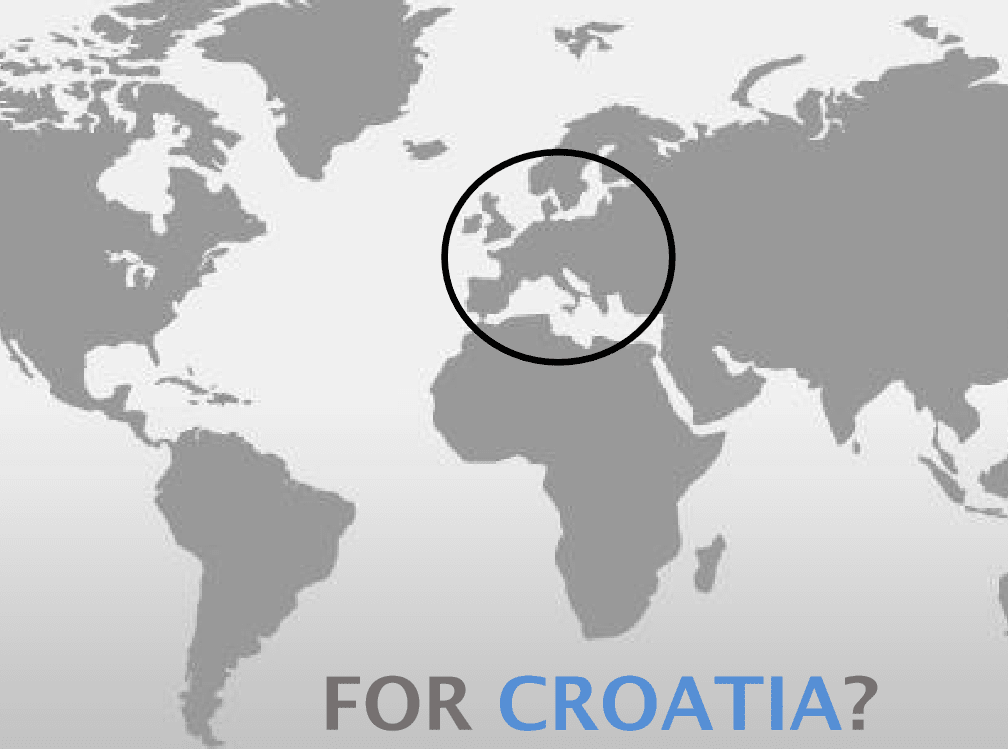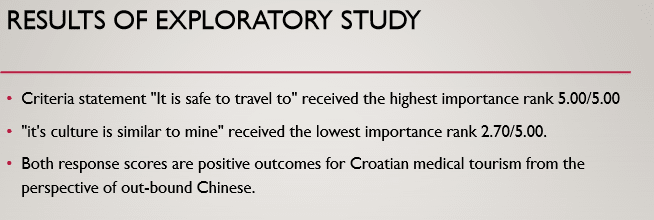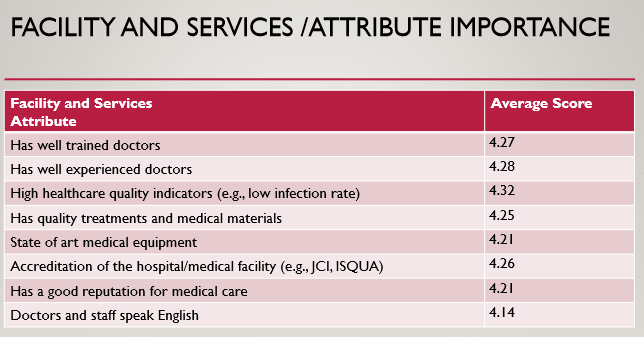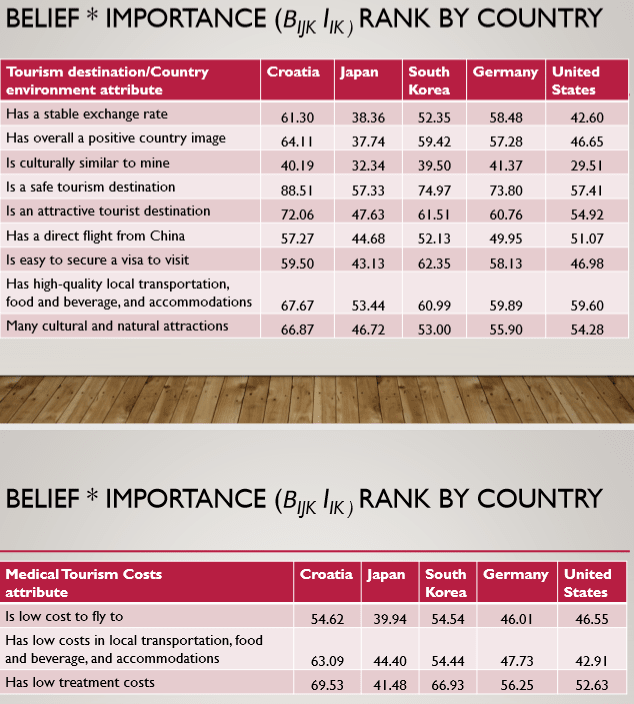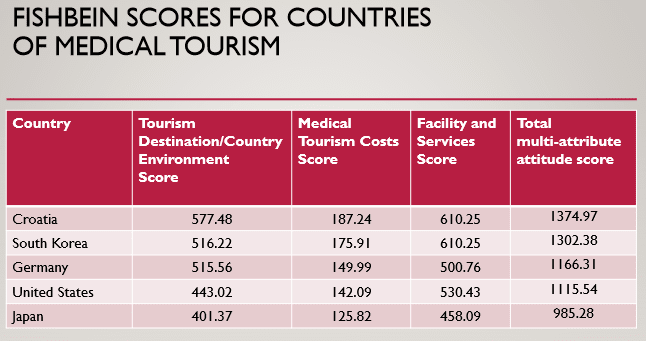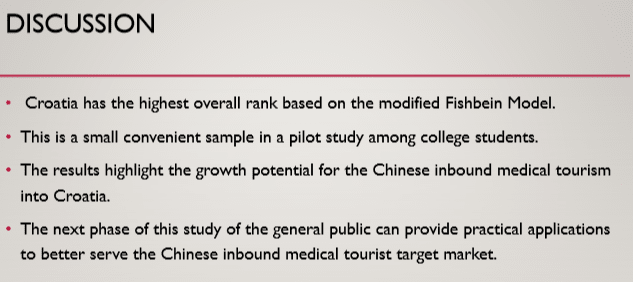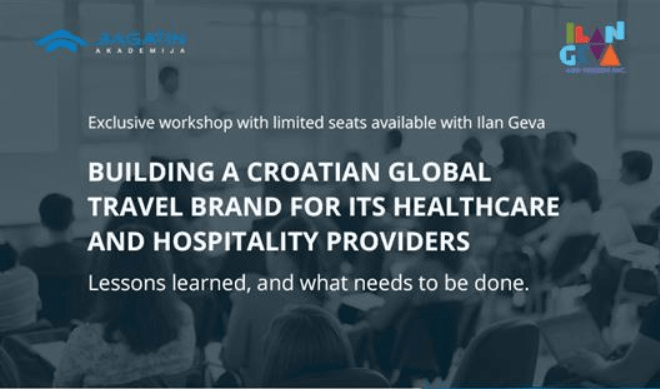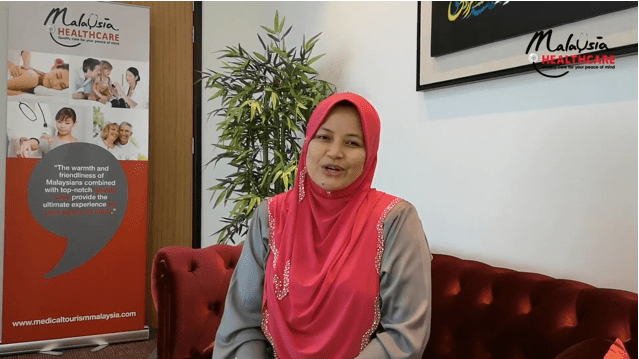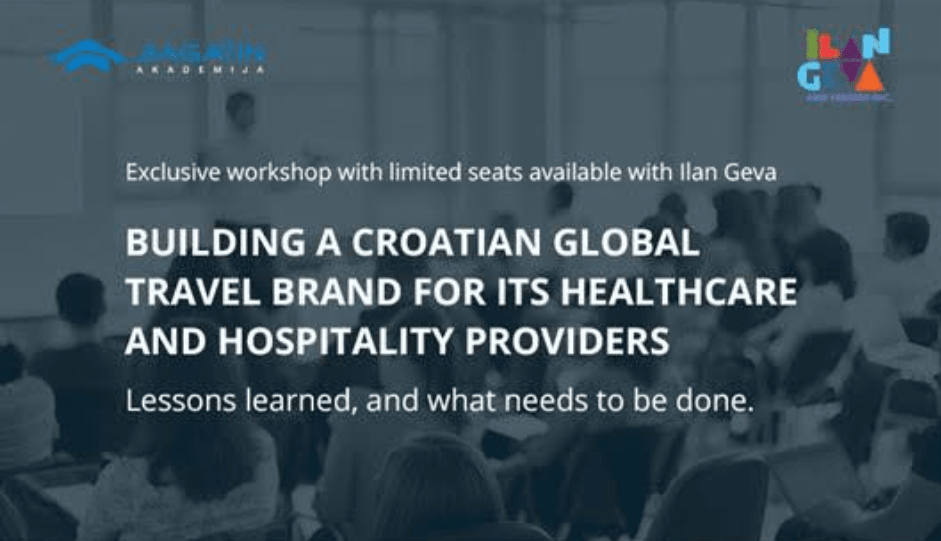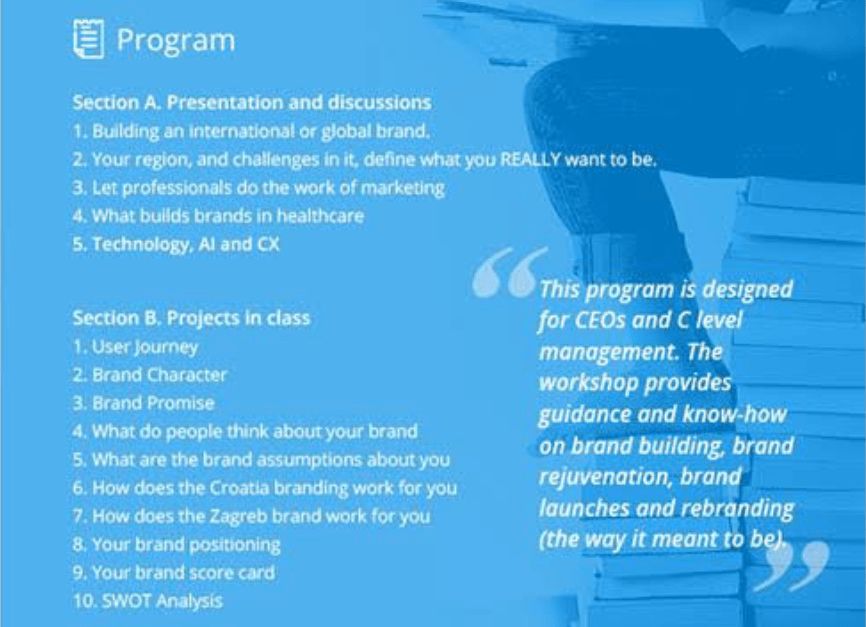Croatian Medical Tourism: Great Potential, Collaborate or Die Says Ilan Geva
November 14, 2018 - Another busy week for the emerging Croatian medical tourism industry. Branding guru Ilan Geva gives his thoughts after his latest visit to Croatia.
It has been quite a week for the Croatian medical tourism industry. Keith Pollard, Editor in Chief of the International Medical Travel Journal, in an interview with TCN, talked about the Croatian potential, as well as assessing that the country could take 25% of the Hungarian dental market 'if Croatia got its act together'; Sherene Azli, CEO of the Malaysia Healthcare Travel Council, which runs the best medical tourism in the world in Malaysia, was in town to explain how Malaysia does it; and global branding guru Ilan Geva was in Croatia for a week, both as a speaker at CIHT 2018, having already performed a special workshop for industry professionals on branding Croatian health tourism in Zagreb. TCN caught up with Ilan after a busy week.
1. You have just spent a week in Croatia, your latest visit since your first 10 years ago, and you held a specialized branding workshop with industry leaders, as well as performing as a keynote speaker at the 6th Crikvenica International Health Tourism conference organized by the Kvarner health cluster. How was your week, and what did you learn?
Every visit to Croatia is a good one for me. I simply like to come here, and get involved in knowing the healthcare providers, visit the hospitals and clinics, and mingle with the movers and shakers of the industry. I always see another angle in my visits, sometimes I focus on one single client, and sometimes I have the time to spend on my own and observe. This last week was indeed intense, since 4 out of 6 days on the ground I was presenting to audiences and following up with conversations.
It is clear to me that the Croatian medical tourism industry is now on a crucial crossroads. There is lots of work to be done. I learned that not everyone agrees on what to do and how to do it. And I came to a very simple conclusion, Croatians must build a national brand for the emerging medical tourism industry.
They must decide which government office supports the effort (only one!) and they must have a sense of urgency, there is no time to waste, the competitors are not waiting.
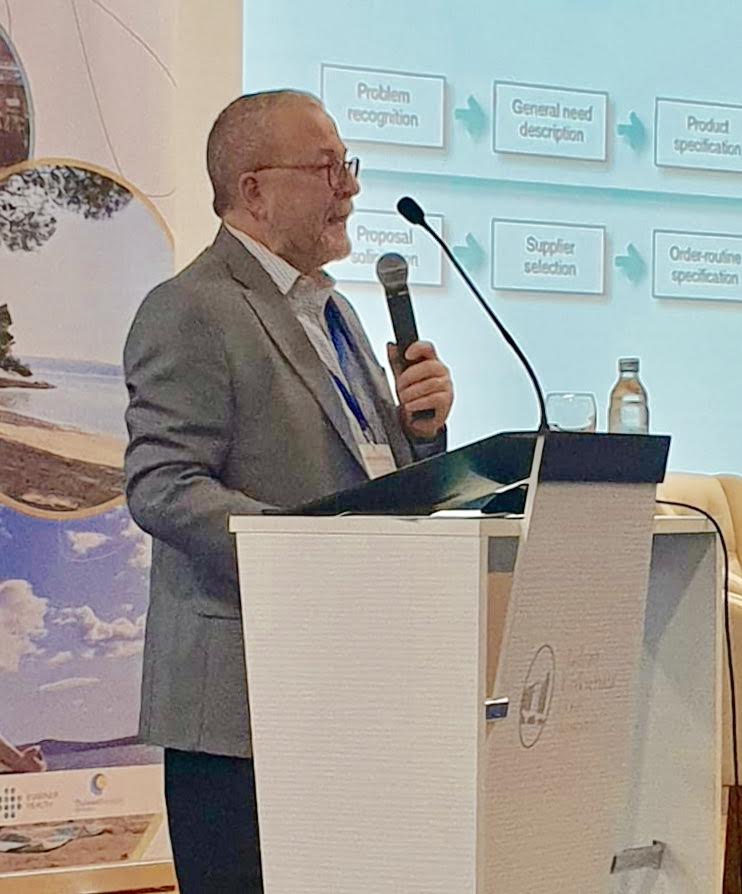
2. You first came to Croatia back in 2008 to help a dentist in Rovinj. Tell us about that, and how the Croatian medical tourism story has progressed since then?
Back in 2008 the entire concept of medical tourism was in its infancy, as far as organized business category. Many providers felt that it is enough to just have a nice clinic and people will show up. There was absolutely no data, information, or anyone to learn from. The wonderful doctor in Rovinj was indeed a very competent doctor, and has presented new treatments in stem cell therapy, but he was a bit naïve. He believed that if he will give me a budget of $400 a month, I would be able to send him 200 patients a year from the U.S.Mathematically this is so improbable, that I saw no point in continuing the conversation. He basically offered me $24 per patient delivered!
And I am not even a facilitator, I am a brand builder and a marketing professional. The situation now is a bit different, but one of the most common sentences I hear in Croatia (as well as in other Eastern European countries) is the sentence: “We have no budget”. That has to change immediately. No one gains anything with no investment. I heard that there is actually money being spent already, the question is who spends it, on what, is it transparent, and does it deliver a clear benefit to all Croatian medical tourism practitioners. Some people complained that the Zagreb Tourist Board has commissioned an American association to do a research, or feasibility study well over a year ago paid a six-figure amount (in U.S. Dollars) and yet no one has seen anything. That doesn’t contribute to the effort of building a consensus and collaboration in this industry.
On the other hand, the overall situation progressed a lot because these days there are extremely successful hospitals and clinics in Croatia, and the awareness is starting to build up, mostly by word of mouth.
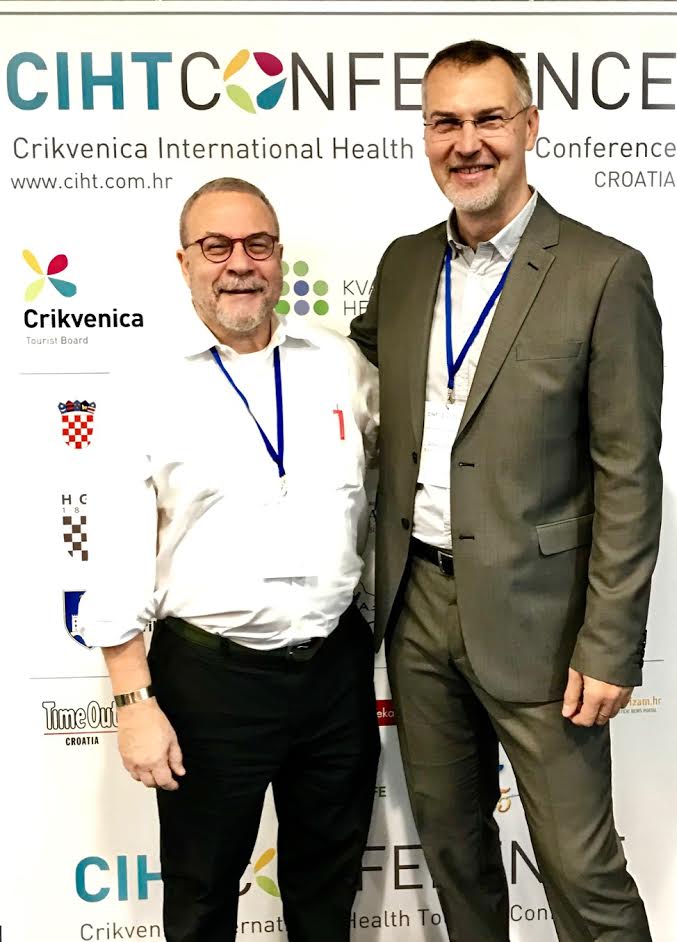
3. One of the key messages of your workshop was the need for all the stakeholders to come together, in a way that Malaysia has managed so well. Give us your vision of the stakeholders involved in getting the momentum behind the promotion of Croatia as a medical tourism destination.
The main lesson I learned from my travels and visits to medical tourism destinations and hospital inspections: Collaborate or die. Malaysia was no different from Croatia, they had to face the decision of being serious about the business, or just being a bunch of hospitals competing with each other. A bunch of hospitals competing with each other doesn’t help any country in creating a solid brand for its medical tourism industry.
Thailand, The Philippines, Israel, Greece and others have some few excellent hospitals. But in fights, inaction, political battles and “lack of budget” kill the opportunity to become a global brand in medical tourism.
Malaysia overcame the obstacle of politics, budget allocation, and legal implementation and made sure that all stakeholders know exactly what they are supposed to do within the medical tourism activity. Clear, transparent and efficient. Croatia is still miles away from that situation. Building a national brand is impossible under these circumstances, because there is no brand…only a bunch of providers spread all over the country.
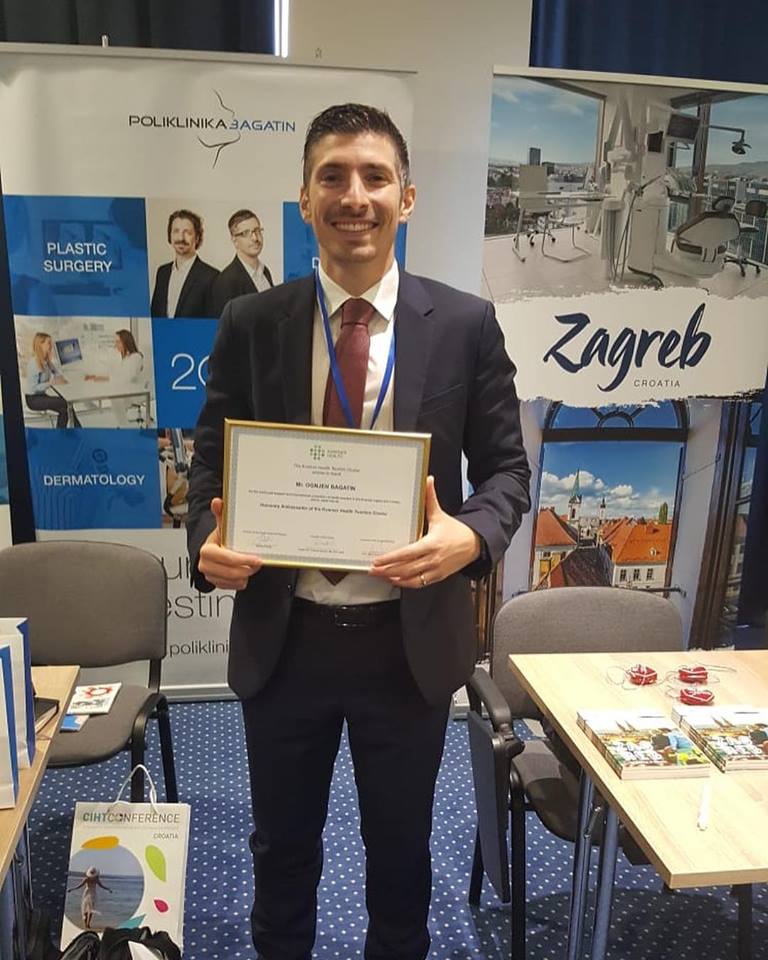
(Ognjen Bagatin of Bagatin Clinic, one of four Croatian clinics Ilan Geva singles out for Croatian medical tourism)
4. You travel the medical tourism globe, and have done for many years. Many Croatians will be surprised to hear that its medical tourism industry has such potential. Paint a picture of that potential, who are the key players in it, and where does Croatian medical tourism stand now, and where could it be in 10 years?
I will name only four businesses that are in the “Premier League” of medical tourism in Croatia: St. Catherine Specialty Hospital, Poliklinika Bagatin, Terme Selce and Svjetlost Clinics. They are each specialists in a separate area, and they are all extremely successful at what they do. They are also aware of the power of brand building, marketing excellence and delivering superb customer satisfaction. There are many other great clinics spread around the country, primarily in tourist destinations, such as Istria, Dubrovnik, Split etc. but they do not have the mass needed to build a global clientele.
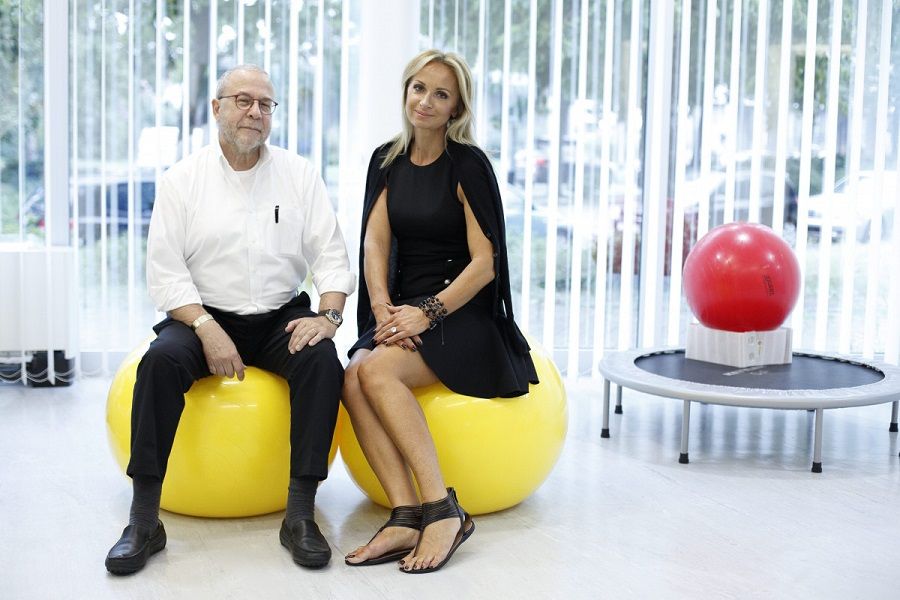
(Ilan Geva with Jadranka Primorac from St Catherine Specialty Hospital)
5. One of the things I learned this week is that the brand of the Kvarner health cluster seems to be stronger than that of Croatia in the industry. What are your thoughts on that?
What I love about the Kvarner Health Cluster is the fact that they are all about initiative. They are a good example of an organization that is trying to do the best for all its constituencies, and lift them all to a higher level. I personally don’t know if the Kvarner brand is more prominent than any other brand in medical tourism, but I also know that Croatia has no national brand in medical tourism…Simple. Croatia has a very strong brand and brand awareness in sports, but not in any medical institution, medical university, research facility or breakthrough innovation. Some of the brands I mentioned above have parts of this reputation, but not the country as a unique entity.
If you ask today anybody in any European location “What is Croatia know for”, I am willing to bet that no one will say “Excellent medical treatments”.
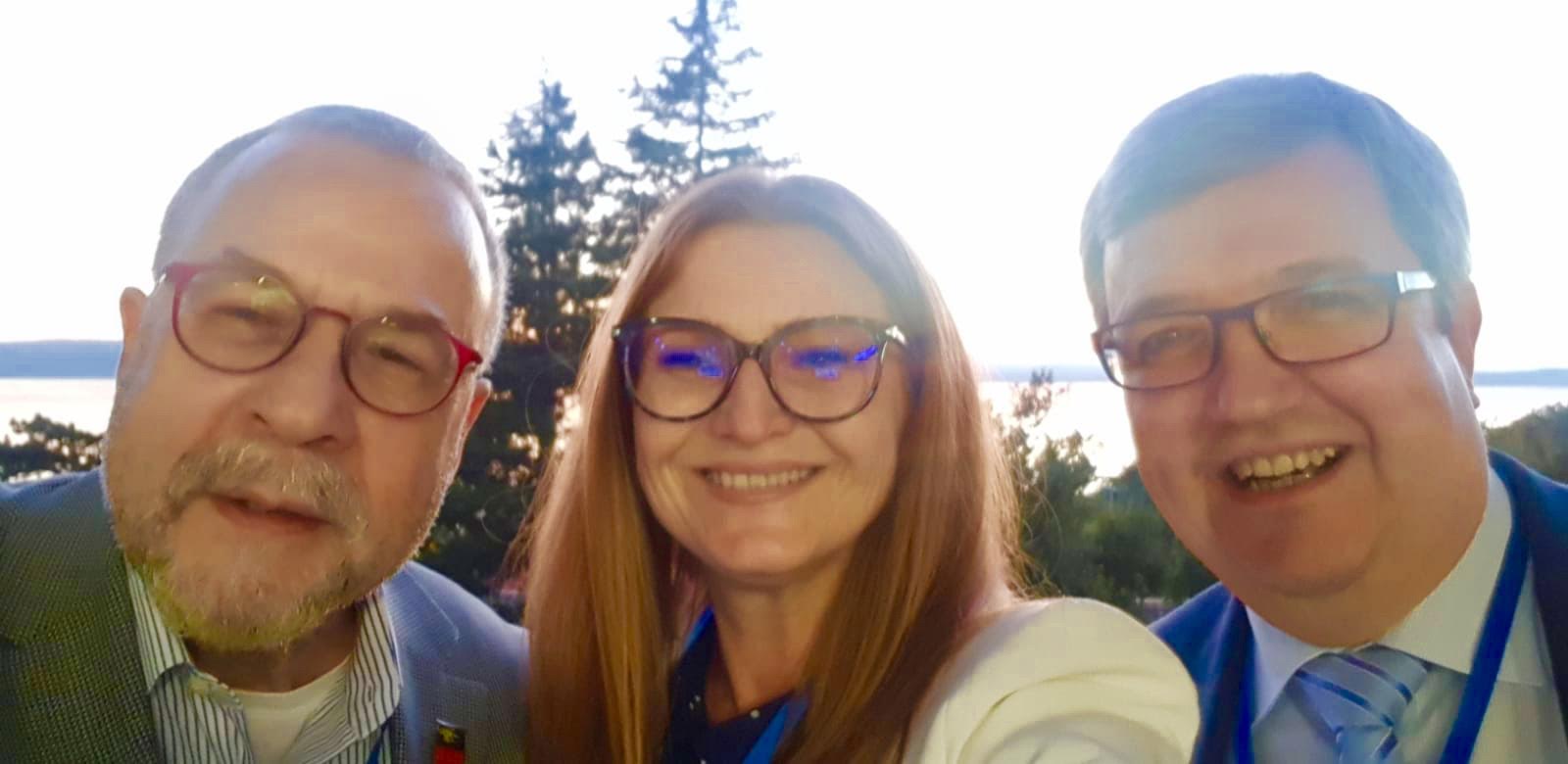
6. Which markets do you think the Croatian medical tourism industry should target, and why?
Draw a circle around Zagreb, which represents up to 5 hours flight, and that circle may include the potential market for Croatia’s medical tourism market. Anything else will be a surprise for me.
7. As a frequent visitor to Croatia with an interest in health tourism, give us a paragraph on the potential healthcare and tourism experience which awaits patients.
This is a very broad question. But I will try to answer it via some examples. First, Croatia does have a brand in the tourism industry. The visitors to Croatia know that they can expect a beautiful clean and pristine country, with amazing sights, fantastic food, and very nice people. That is hospitality, and Croatians are known to be wonderful hosts. But even in this category, there are already voices that warn people not to show up in Dubrovnik at the height of the season, because the place is too small to contain all the visitors, and the level of service is deteriorating…Some of the great generosity and professionalism Croatians display in tourism is also evident in medical treatments. But the country does not have certain standards that will welcome patients in every location across the country. The customer experience might vary, and that is a danger when going forward.
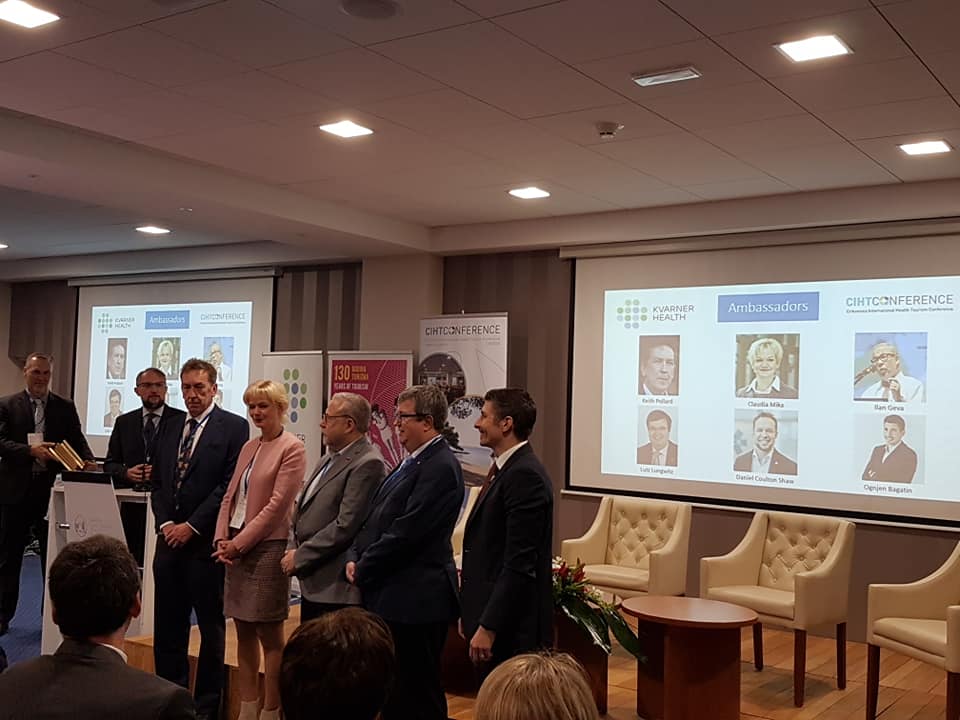
(Ilan Geva was among the nominated ambassadors by the Kvarner Health Cluster in Crikvenica at CIHT 2018)
8. You were given a special recognition in Crikvenica at CIHT 2018, as one of the conference ambassadors, and you were given an extra gift at the end - a Luka Modric shirt. Tell us about that and the hospitality you received in Crikvenica, where you were clearly very at home.
The truth is that I was booked at another conference in Korea at the same time the CIHT conference took place. Suddenly, that conference was cancelled, and I was joking with Vladimir that I will come only if he will give me a Luka Modric official team shirt…Little did I know that he would take it seriously. I am actually glad he did! I was betting with all my friends in Chicago that Croatia will make it all the way to the finals, and they all laughed at me…they simply don’t know the grit of the Croatian people. If Croatians will demonstrate the same team spirit and determination in Medical Tourism, as they did in the World Cup, nothing will stop them!
My last visit to Crikvenica was the fourth one, and I enjoyed all of them, even in the winter. I know from personal experience that the people are extremely generous, professional and very welcoming. I also know from personal experience that as medical professionals they are good, very good.
Now what we have to do is make them famous around the world, and position them as the right people in the right place.
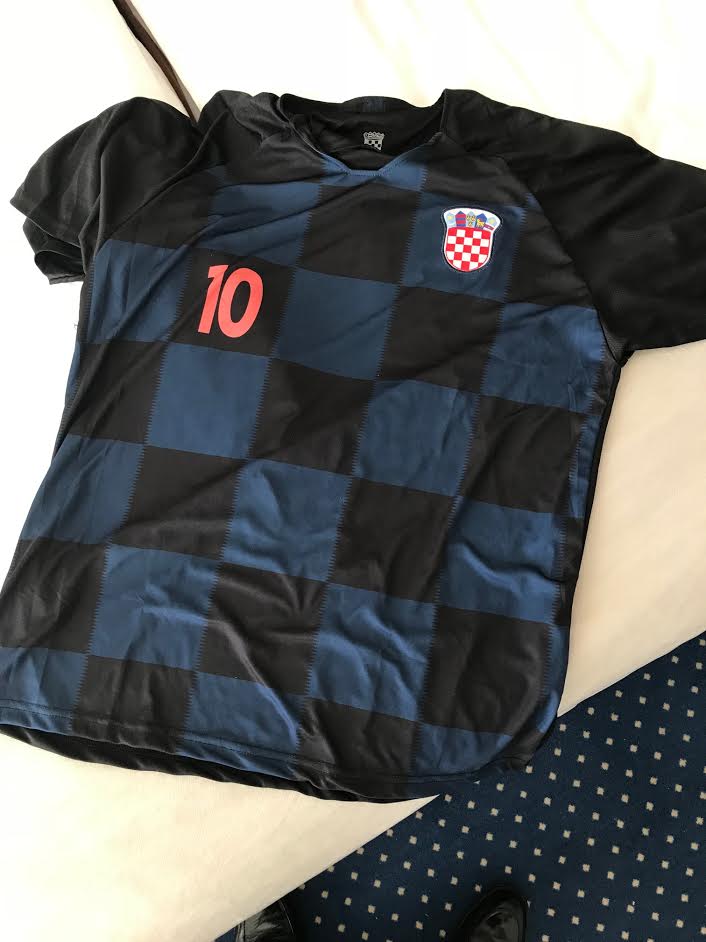
(The Luka Modric shirt...)
To learn more about Ilan Geva, check out his official website.
To follow the latest from the Croatian medical tourism story, click here.
Lessons from Malaysia in Croatia: MHTC CEO Sherene Azli on Health Tourism
November 12, 2018 - One of the many things I love about my job running Total Croatia News is that there is so much to cover in this beautiful country, and each day brings a new surprise and opportunity for learning.
It is now more than a year since I was alerted to the quality of the very best in Croatian health tourism. St Catherine Specialty Hospital, a Leading Hospital of the World and recent European partner with Mayo Clinic for the new OneOme RightMed pharmacogenetic test; Bagatin Clinic, named the best dermatology clinic in Europe to add to a host of dental awards; Svjetlost Eye Clinic, a regional leader attracting Hollywood stars from California. The list goes on. You can read more about my early discovery of health tourism in Croatia here.
All this led me to a specialised workshop at Bagatin Clinic last Monday, where global medical travel branding guru Ilan Geva spent the day with industry leaders discussing the branding of Croatian medical tourism. It was a very thought-provoking day for all involved, and it was – for me – the first mention of an Asian country which was apparently setting the standards in medical tourism worldwide. As I noted in my report on the seminar:
A little online research, and it seemed that everyone was talking about Malaysia – the Facebook page of International Medical Travel Journal last week was quoting the Malaysian Prime Minister.
Three days after Ilan Geva’s seminar in Zagreb, I found myself taking him up on his suggestion to come down to Crikvenica to see how the Kvarner Health Cluster was doing things. One of the keynote speakers at the Crikvenica International Health Tourism conference was Keith Pollard, Editor in Chief of IMTJ, who kindly agreed to an interview with TCN (you can read it here). He also had some rather nice things to say about Malaysia:
It was time to meet Malaysia…
I have been to a lot of conferences in my life, but I was not quite prepared for what happened next. Sherene Azli, CEO of the Malaysian Healthcare Travel Council (MHTC) gave a presentation called Experience Malaysian Healthcare, Embrace Malaysian Hospitality.
She put on quite a show.
Before we get to Sherene’s presentation, one of the best moments of the first day of the conference was Sherene’s explanation of this slide, above.
“I am probably the only Muslim in the room,” she said. “But I want to share something with you regarding hospitality. On the left in the photo above is what greeted me in my Crikvenica hotel room – qibla, prayer mat and Koran. And on the right – halal breakfast options. I have only had that once before in 60 countries of travel – last year at the Hilton in Zagreb. Thank you Croatia, I have learned something that we can implement back in Malaysia.”
It was a beautiful and humble moment for me – here was the market leader coming to help a country trying to establish itself on the market, but humble enough to recognise and emerge from the experience with a learning experience of its own. I was beginning to have warm feelings for Malaysia…
How many people know where Malaysia is? Croatia is obviously not a target market for Malaysia for medical tourism, or for Croatians for tourism in general, but I felt a little embarrassed that I could not quite pinpoint Malaysia on the map. But what followed has had me researching Malaysia a lot since.
For this is a country which has REALLY got its act together, bringing all its key institutions together for the greater good – the promotion of Malaysia as a medical tourism destination. After her very impressive presentation, I asked Sherene how Malaysia did it and how it all started:
It started maybe 15-20 years ago, but on a very small scale. Back then Penang was a destination for Indonesians. But back then, the trend was more outbound - Malaysians would travel to places like Singapore to get treatment. But once we noticed Indonesian visitors coming to Penang for treatment, we noticed perhaps the potential to develop this sector of tourism.
So in 2009, we set up the Malaysia Healthcare Travel Council, as a department in the Ministry of Health. By 2011, it was made into a corporate body. It is like a private body, but I report to ministers. It used to be the Minister of Health, but now it is the Minister of Finance.
The mandate was twofold - facilitation of the industry and then the promotion. So before we could start selling what we had, we had to get the facilitation right. MHTC has been doing that since 2011, looking at tax allowances, how we build the infrastructure, how we encourage development with the different states of Malaysia. I gave the example of Penang in my presentation, but we work with all the different states in Malaysia.
After we did all the planning for the facilitation, we embarked on promotion. For Malaysia, one of the challenges is that our currency is quite weak. So when we want to promote internationally, it is very costly. In China, for example, a simple campaign can cost US$1 million, and we don't have that money.
So what we have done is to collaborate with Malaysian agencies on the ground such as Tourism Malaysia or investment organisations like the Malaysian External Trade Development Corporation. It is very expensive for individual hospitals to go out and promote, so we help with the coordination. So the private sector invests in a more cohesive manner, and we have a culture of cooperation and competition. Focus on marketing the destination - Malaysia - first and foremost, then build your brand as an individual hospital or clinic. So that has been our strategy, and we have made a lot of progress since 2011.
Now EVERYONE wants to be in medical tourism, and the competition is strong. The bar was already high, but now it must go higher.
And here we are in Croatia. How did you get here?
It is actually my second time. I was invited to speak at a conference in Opatija last year. I was invited to speak at CIHT 2018 to share our experiences in Malaysia, and I am delighted to be here. It is a very beautiful country.
I am quite new to the medical tourism scene, and I don't have your experience or perspective. Tell me about Croatian medical tourism from your perspective - how is it doing?
Croatia has a very rich tourism history, dating back to the 19th century I think. Regarding medical tourism, there is big potential, but unless you can get everyone working together, the results will be very fragmented. Whether you like it or not, Kvarner Health Cluster is doing a great job promoting this region, but it may seem to be in competition with other regions in Croatia by doing that.
If you are promoting Croatia, and one region in particular is promoting itself, it is then competing against other regions, and that can be a waste of resources. All the stakeholders should be working together. In Malaysia 90% of my job is working with the stakeholders towards a coordinated approach.
This is my fourth year in the job, and I realised that if it was going to work, I needed the support of the main stakeholders. So I went to see them and asked them to support me in my decisions, or this was not going to work. It has not been easy, but we are making progress.
Coming back to Croatia, what is the reputation of Croatia's medical tourism industry? Does it have one?
When it comes to medical tourism in Eastern Europe, there are two countries which always come up - Croatia and Hungary. So the good news is that you are in the top two, but then I hear about Kvarner and other things, and I get confused - where is the focus? That's my perception. I may be wrong, but that is how it comes across to me.
So it is fair to say that Kvarner almost has a bigger brand than Croatia for health tourism?
Yes, definitely. Which is good news for Kvarner or course. But looking at Malaysia, perhaps it is similar to how Penang was at the beginning. But one thing we realised very early on in Malaysia is that everyone can benefit. You don't have to fight. I was given a mandate to bring everyone together for the benefit of Malaysia and the health tourism sector, and that is what I am working very hard to do.
(Perhaps Malaysia’s best medical tourism ambassador – its 93-year-old Prime Minister who had a double heart bypass when he was in his 60s and 80s. In Malaysia of course…)
To learn more about medical tourism in Malaysia, visit the MHTC website here.
To follow TCN coverage of health tourism in Croatia, click here.
Croatian Health Tourism: Interview with IMTJ Editor Keith Pollard in Crikvenica
November 10, 2018 - TCN meets Keith Pollard, Editor in Chief of International Medical Travel Journal on the potential for Croatian health tourism at CIHT 2018 in Crikvenica.
Among the many high-quality Croatian and international expert speakers at this year's Crikvenica International Health Tourism conference was Keith Pollard, Editor in Chief of the most influential media in the health tourism industry, the International Medical Travel Journal (IMTJ). TCN caught up with Keith to talk a little about Croatian health tourism potential after his thought-provoking presentation at the conference - Developing a Medical Travel Strategy for a Hospital or Clinic.
Give us a little advice on Croatian health tourism. Who do we look to for best practices, and where can Croatia realistically compete on the market?
Let me start by saying that there is massive hype around this sector. Massive. Everyone thinks they can do medical tourism, but if you are looking for one place to learn from, study Malaysia.
Malaysia without a doubt is the country which has got it together. We have the IMTJ awards and Malaysia has won Destination of the Year three out of four times. They have managed, somehow, perhaps because of the culture, to get all the bodies and stakeholders together. I have been there and been through the process, and it is real.
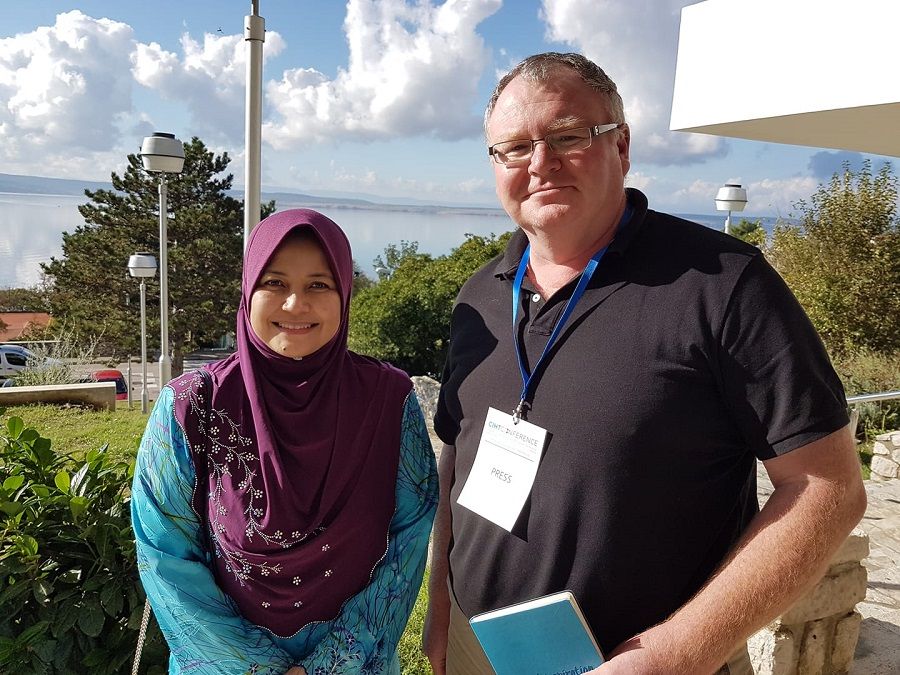
You come off the plane, and the lady is waiting with your name to greet you. Sherene (Azli, CEO of Malaysia Healthcare Travel Council, above, also a speaker at the conference) has I think 35 staff, and they have put a real investment into the process. And you can see it is working. The other thing Malaysia does well is to measure any kind of result. They do it because the government says they have to provide the data. Dubai also does it because it is also required.
Croatia does not have anything like this. In many ways, Croatia is like Spain, which is a similar destination in many ways. There, the government threw some money at it, but it was not measured and ineffective. What made the difference was is the individual guys running the clinics. That is what has driven their medical tourism business. You have entrepreneurs who have a sensible marketing, a business brain, and they see the opportunity and do a great job marketing it. Croatia has a little of that entrepreneurial businessman coming through, with Bagatin Clinic the most prominent. Ognjen Bagatin is one of the most entrepreneurial people in this country.
(How the Malaysians do it - codename UNITY)
Croatia could learn from the way that Hungary developed its dental tourism business. Basically, it was seven clinics which came together. It was not the government which did anything. Those seven came together and formed the Association of Hungarian Dental Clinics, and they set some standards in terms of what their members would offer international patients. And now Hungary has a very good patient experience.

(IMTJ's Keith Pollard was one of six ambassasors of CIHT who were recognised by the Kvarner Health Cluster at the opening of the conference)
The patient has a warm welcome at the airport, the hotels are set up for dental patients, with special menus. More than half the occupancy of some hotels is due to patients going to these seven clinics. Getting a bunch of like-minded business people together who see the potential is what started things off.
You go to somewhere like Creative Dental in Budapest, which is one of the best models, and you have a 7-storey, purpose built property, 15 dentists, a laboratory, internet café on the roof. And all along the wall, details of all the international media they have received. It is hugely impressive.
What is the difference in quality between Croatian and Hungarian dental care?
I don’t think there is really. Hungary did very well in the UK if you go back 10-15 years when there was a real shortage of dentists, and it went to two countries to find dentists – Hungary and Poland. The NHS hired hundreds of dental workers, and so this certainly helped Hungary, as UK patients were used to Hungarian dental professionals.
How much of a hindrance is it for Croatia has so few low-cost flights, compared with somewhere like Budapest?
I always fly BA, so it is not a problem, but for the budget airline market, yes, Zagreb is missing out. Wizzair, easyJet – it does make a big difference.
Croatia has 18 million tourists a year. If just 1% of those can do get their teeth or eyes done on holiday, that would be 180,000 patients a year.
I wouldn’t do it while they are on holiday though. I can’t understand why Croatia doesn’t market its health tourism better. Data is key, and you have all the data on all these tourists. You have 4 million a month in peak season, and then it drops to 300,000 a month in January, which is why everywhere is shut in winter.
You have this captive market of tourists who love Croatia, who probably never even think of getting their teeth done in Croatia. There is no connection in their minds between Croatia the summer destination and Croatia as an affordable quality healthcare solution. Crikvenica is beautiful today in November. Get the tourists back for healthcare out of season.
You have this positive, captive consumer. You don’t even have to sell to that many – get them to come back in February.
Where is Croatia going to be on the medical tourism map in 10 years?
It COULD – if it really got its act together – it could take 25% of the Hungarian dental tourism business, if it got together and did things properly. I don’t see why not. I come here a lot. I like Croatia very much.
How big is the Hungarian dental market?
I don’t know exactly, but I know of one clinic dealing with 800 patients with average spend of 5,000 euro a month, for example. I also know how much they spend on marketing. But that is just one of the big clinics. Go and do the maths. How much does he spend on Adwords each month? A lot. And they target very well – one of his biggest markets is Finland, for example. Finns, Brits, Irish, Germans and other Scandinavians. And the way they market in Finland is very different. They will sponsor concerts in various target cities and get their name out that way. Very impressive.
****
Lots of lessons to be learned in Crikvenica, and many thanks to Keith for his time. A country of excellence to learn from – Malaysia. A market to learn from and compete with much closer to home – dental tourism in Budapest.
To follow our coverage of health tourism in Croatia, click here.
Safe Croatia: Understanding Chinese Perceptions of Croatian Medical Tourism
A fascinating pilot survey in China by a New York university at the 6th Crikvenica International Health Tourism Conference on November 8, 2018 opens up an intriguing possibility for Croatian medical tourism. Small steps, but ones worth following up.
The more I get involved in the Croatian medical tourism story, the more fascinated I become. And the more I become convinced that Croatian medical tourism is the single most important sector for Croatia to be investing its time and marketing in. With so many competitive advantages, as we have previously discussed, the only thing that is holding Croatia back from this potentially billion-dollar industry, is local cohesion, a brand and a strategy and roadmap of how to get to the next level.
Yesterday, we touched on the views of various international participants of the conference, which included 18 high-quality speakers, all experts and market leaders in their medical tourism fields. You can read that article here, an article with a Malaysian feel after Malaysian Healthcare Travel Council CEO Sherene Azli's eye-opening presentation on how Malaysia became the number one medical tourism destination in the world. We will publish an interview with Sherene shortly.
Although I knew that the Kvarner health cluster was the most progressive body in the emerging Croatian medical tourism industry, I will confess to being more than stunned at the quality of the speakers - both Croatian and international - as well as some of the very niche topics which were presented. Professor Christine A. Lai, from the State University of New York Buffalo State, for example, with a presentation entitled Understanding Chinese Perceptions Toward Croatian Medical Tourism.
Niche indeed...
And fascinating.
The potential of the Chinese medical tourism market had already been touched upon during the Malaysian presentation, as Sherene pointed out some of the regional opportunities for Malaysia. With changes to China's infamous one-child policy, there are now apparently over 40 million Chinese women over 40 (as I understood it) interested in IVF treatment. If Malaysia could position itself as the regional leader in that industry, Malaysia's already booming health tourism industry would boom even more. But how could there be an opportunity for Croatian medical tourism with Chinese patients?
I sadly missed the opening of Professor Lai's presentation as I was interviewing Sherine, but as I understood things, Professor Lai's academic connections to China enabled a very limited modified Fishbein survey on perceptions of medical tourism destinations around the world. The sample size was small and very educated (young students), so there is no suggestion that this is a definitive study, but rather perhaps a seed worth planting to see if it could turn into something very solid indeed. As Professor Lai's slides showed, Croatia is being discovered by a greater number of Chinese each year.
South Korea, Germany, USA, Japan and Croatia were included in the study. The most important factor in the study for Chinese respondents? Safety. One of Croatia's strengths. Croatia, Full of Safe Places. Maybe time to make more of the branding of Ivan Vucetic from Hvar, the father of dactyloscopy...
So what are the attributes which are most important to this small educated Chinese sample? Scores above out of 5. Safety.
And from a medical tourism point of view? The requirements were understandably more stringent.
And then the big shock. Taking into consideration all the factors from safety to price in Japan, South Korea, Germany, USA and Croatia, there was only one clear winner - Croatia. And look how strongly Croatia performed on safety.
A summary of the scores.
It is too early to start building clinics in Zagreb and beyond for millions of incoming tourists to the Croatian medical tourism industry, but it is not too soon to start taking the findings of this very small sample and expanding it to see where this might lead. The perception of 'safe' in this increasingly troubled world, combined with strong medical reputation, great prices and a strong tourism offer, could well prove to be quite a bonanza for the Croatian medical tourism industry.
The Croatian National Tourist Board opened an office in Shanghai last week. One of the lessons from Malaysia which I will be looking at in my interview with Sherene Azli is the use of all Malaysian institutions to promote the medical tourism industry. The Malaysian Healthcare Tourism Council only has two offices abroad (from memory in Vietnam and Indonesia) - all the rest of the marketing is done through the network of offices of the Malaysian Tourist Board.
Imagine the same happened in Shanghai. Croatia, the safe European destination full of tourism, but also a destination for high-quality, affordable medical tourism.
Croatia could hit its goal of becoming a 12-month tourist destination quicker than planned if it plays its cards right.
The time for a big push on Croatian medical tourism is now.
To learn more about the Crikvenica International Health Tourism conference, click here.
To follow the latest on the Croatian medical tourism industry on TCN, click here.
Malaysia Shines at CIHT Kvarner Health Tourism Conference in Crikvenica, Croatia
November 8, 2018 - How Malaysia became the world's best medical tourism destination, lessons in branding Croatian health tourism, and much more in an outstanding first day of the Kvarner Health Cluster CIHT conference in Crikvenica.
I had known in the back of my mind somewhere that the Kvarner health cluster was doing an amazing job at promoting health tourism on the northern coast of Croatia, but it was only today that I fully appreciated quite how well they were doing. An email exchange with leading global medical travel branding expert Ilan Geva recently led me to attending his specialised workshop on how to brand Croatia as a medical tourism destination in Zagreb earlier this week, and he filled me with enough enthusiasm and curiosity that I found myself on the road at 6am this morning - destination Crikvenica for the Kvarner health cluster's 6th Crikvenica International Health Tourism Conference at Hotel Omorika overlooking the Adriatic Sea. The conference, also supported by local regional and national bodies and tourist boards, included representation from the Ministry of Health, Ministry of Tourism and Croatian National Tourist Board.

I have attended a number of conferences in recent months in Croatia, and there were so many aspects of CIHT that really caught the eye, once one had devoured all the superbly presented information on the event website, including welcome video messages from four key international speakers. There are 18 international speakers in all, experts in their field back in their native countries, and each with some expertise to share to help the Kvarner health cluster and medical tourism in Croatia learn and grow. One of my favourite details - simultaneous translate available in both English and Croatian (speakers spoke in different languages - see photo above) - although I didn't use the service, the speed with which the panelists answered questions indicated what a high-quality job the interpreters were doing.
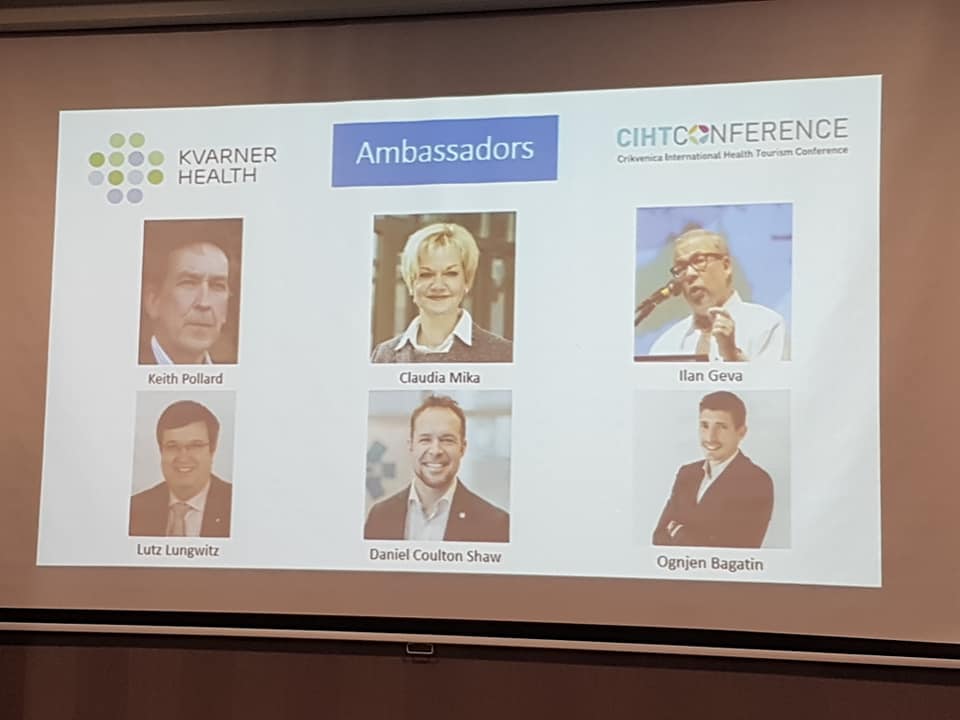
The high-quality nature of the international expertise was perhaps best illustrated after the introductions, as the Kvarner Health Cluster made a presentation to its six ambassadors in recognition of their work.

Keith Pollard, Editor in Chief of International Medical Travel Journal (IMTJ), Claudia Mika, founder and CEO of Temos International in Germany, Lutz Lungwitz, President of the German Medical Wellness Association, Daniel Coulton Shaw, co-founder of Global Clinic Ranking and Smile Clinic Slovakia, Ognjen Bagatin, CEO of Bagatin Clinic in Zagreb, and Ilan Geva. Geva was put to the back of the list for the presentations, as he was given an additional gift - a Luka Modric football shirt, which he had jokingly requested previously. A nice touch.
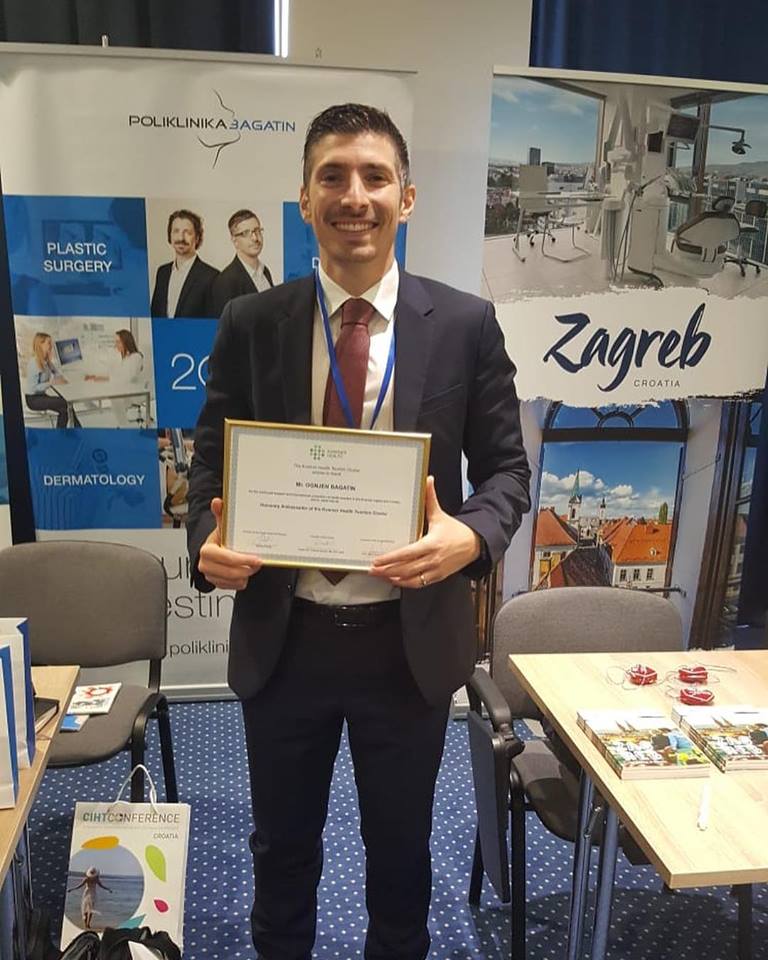
It was particularly pleasing seeing young Bagatin get recognised for his efforts. There is no more avid - or effective - promoter of medical tourism in Croatia today, and his tireless travelling of the globe and local lobbying to move the story forward has placed his as the key person in developing the Croatian medical tourism story.
With such a star-studded lineup, I was expecting some great information and presentations, but I was not quite prepared for what followed. Malaysia has been named as the best in medical tourism travel for several years in a row, and Sherene Azli, CEO of the Malaysian Healthcare Travel Council was on her second visit to Croatia to explain how they did it. It was perhaps the most impressive presentation I have heard in my time in Croatia - of how to make an industry go from nothing to the world's best in just a few short years. And I was not the only one who was absolutely stunned at the Malaysian approach and cohesion of all the major stakeholders; I overheard one of Croatia's most successful clinics (I will not mention which) approach Sherene after the presentation, gushing with praise at the achievement, and lamenting the fact that such togetherness could be achieved elsewhere but not in Croatia.
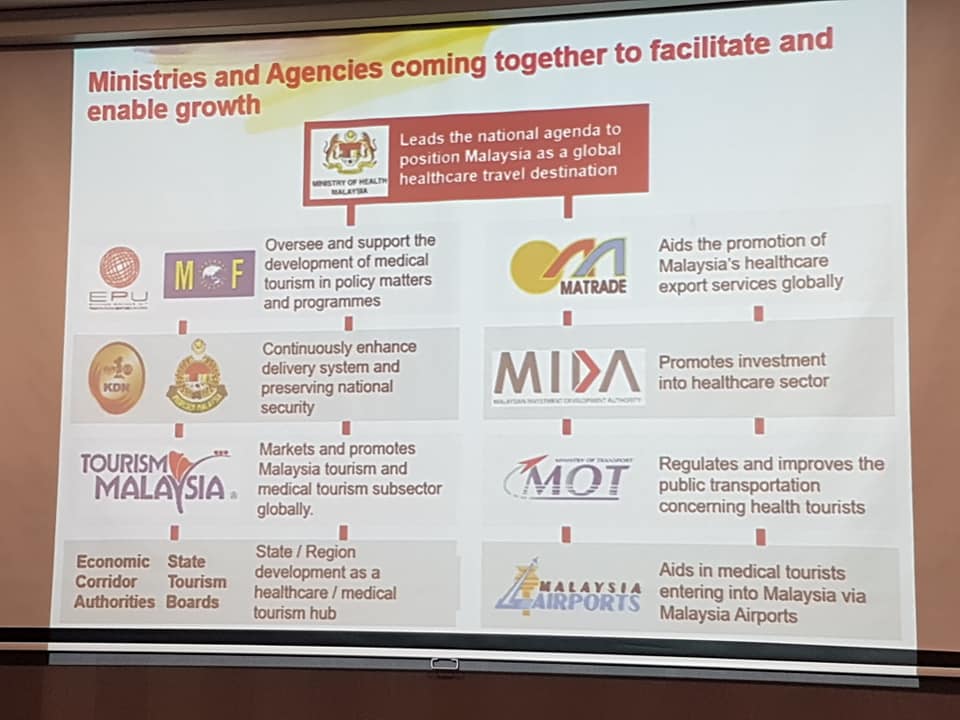
Sherene kindly gave TCN an interview in the November Crikvenica sunshine, which I will publish in full in the coming days. It is quite a story, but I leave you for the moment with two things - the slide above listing all the major stakeholders who are all working as one, with Sherene coordinating all. About 90% of her job is managing the stakeholders, but 100% unity of the relevant institutions from marketing to arrival at the airport. A dedicated medical tourism waiting lounge is the first contact, which includes a transfer to the clinic. And the second teaser for now - take a tour of the Malaysian medical tourism experience in the official video below.
And then perhaps the nicest moment of the morning session of the first day of this Kvarner health conference - a thank you to Croatia from Sherene not only for some thoughtful hospitality she had never encountered in 60 other countries she has visited, but hospitality which showed her how Malaysia could improve its service and hospitality thanks to her experience in Croatia.

I am probably the only Muslim in the room, she said, as she showed us a slide of two tiny details that made her feel truly welcome and that had never happened anywhere else. On the left, prayer mat, qibla and Koran which she found in her room, on the right Halal breakfast options.
"I have only come across this halal option once before on my travels," she said. "At the Zagreb Hilton last year."
Well done Croatia. Those little details make a big difference.

Sherene was not the only fascinating speaker. The first morning session consisted of the following:
Is Kvarner health a tourism destination following the EU scenarios for health tourism development? Milena Persic, Full Professor at the Faculty of Tourism and Hospitality Management in Croatia.
Developing a medical travel strategy for a hospital or clinic. Keith Pollard of IMTJ. Keith, pictured above right, is a fellow Brit and also kindly gave an interview on the potential of Croatian medical tourism, one which I will also publish shortly.
How to use TRUST in building the brand of your country, hospital, and people. Ilan Geva from the United States.
Understanding Chinese perceptions towards Croatian medical tourism: a Fishbein model based on competitive analysis. Christine A. Lai, Professor at the State University of New York Buffalo State, USA.
University Eye Hospital Svjetlost - from a single practitioner office to an international chain of eye care centers. Ivan Gabric from Eye Hosptial Svjetlost in Croatia.
A global patient stream turning online - the key ingredients to grow your patient base. Martina Viduka, Clinic Relationship Manager of Qunomedical, Germany.
France Surgery - the key to success. Carine Briat-Hilaire, CEO and Co-Founder of France SURGERY, France.
Development of international cooperation in the Lublin Medicine Cluster in the field of scientific research and innovation in medicine, health, and education. Dariusz Matosiuk, Vice-Rector for science at the Medical University of Lublin, Poland.
Quite an international field, with some truly fascinating topics, even for a non-medical person such as myself.
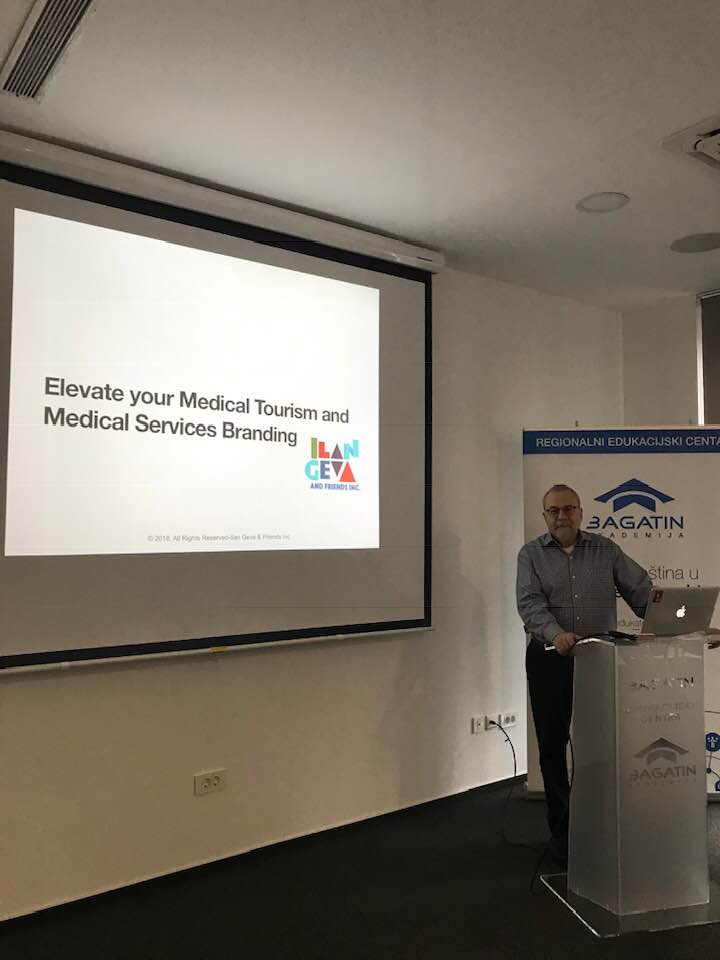
(Ilan Geva at the Bagatin Clinic Croatian branding workshop in Zagreb earlier this week)
"Tell us a little about the branding of Croatian medical tourism from an industry perspective, and how can it be improved," I asked the first panel from the audience.
"Croatia doesn't have a medical tourism brand. Period. I told you I am direct, but that is the truth. It has GREAT potential. It has some brilliant businesses such as Bagatin, which are doing incredible things, but private businesses cannot brand a country. The politicians need to provide the legislative framework for medical tourism to operate effectively. Then they need to set a budget. Then they need to get the hell out of the way and let the professionals deliver."
It was a theme echoed by Svjetlost's Ivan Grabic, whose frustration with the lack of national branding and promotion was not hard to detect. I asked him what he would do with a blank paper and pen and a mandate to deliver medical tourism in Croatia. He was extremely candid - and smart. Bring the clinics together to agree what they can offer. Then go to the government and involve the official stakeholders, for only the State can create a country brand, not a private company. Then agree a budget, which is where the fun begins. Gabric said that for every euro spent on marketing his eye clinic, he knows he will get 15-20 euro of business. Creating a Croatian medical tourism brand will not only take time to be successful (several years for France Surgery and the Malaysian Healthcare Travel Council), and so it will be seen as a shot in the dark with no immediate results. And that's where things break down with official cooperation and funding.
So the current state of the Croatian medical tourism industry, which has the potential to bring in BILLIONS to Croatia is this (from this Englishman's perspective):
1. The biggest brand for health care in Croatia does not mention Croatia - it is Kvarner health.
2. The biggest advocate of Croatian medical tourism is one private clinic in Zagreb (and soon in Split) - Bagatin.
3. Some of the best eye surgery (and probably the best for quality and price) in Europe is to be found in Zagreb and 6 other locations in the former Yugoslavia - Svjetlost.
4. There is a hospital in Zabok which is the exclusive partner of the world's best hospital, Mayo Clinic, on a new healthcare initiative - the OneOme RightMed pharmacogenetic test - which can save hundreds of thousands of lives a year and save hundreds of billions of dollars.
5. ALL the international medical tourism experts agree on the potential of health tourism in Croatia. And ALL the experts say the next step is for all the stakeholders to work together to make that happen.

Here is Sherene's slide on how Malaysia did it again - a reminder of how Malaysia did it.
In the front row at today's Kvarner Health cluster conference were senior representatives of the Ministry of Health, the Ministry of Tourism and the Croatian National Tourist Board - all key players.
Can Croatia do a Malaysia? Over to you, Croatia.
As for me, now I REALLY want to go and visit Malaysia... Learn more about the Malaysia Healthcare Medical Council here.
****
To follow the latest news regarding the Kvarner health cluster and medical tourism in Croatia in general, follow the TCN medical tourism tag.
For more on Kvarner health and the Crikvenica International Health Tourism Conference, click here.
Croatian Medical Tourism Meets Ilan Geva Branding Experience at Bagatin
November 6, 2018 - These are exciting times for the Croatian medical tourism industry, and while there seems to be little interest from the State authorities, the leading private clinics in the Croatian medical tourism industry are pushing forward, engaging the help of leading world experts in health travel to help them grow.
Life running Total Croatia News is full of diversity, and no two days are the same. Given the growing reach of TCN these days (now the number-one-searched website in the world for news about Croatia), we tend to cover an increasing number of diverse topics. As digital nomads, the chance to work remotely gives us more freedom to cover all aspects of life in Croatia. And so while the weekend was spent picking olives in the family field and reporting on the natural way of life in Dalmatia, Monday morning brought me to Zagreb for a niche seminar organised by the Croatian medical tourism industry.
As followers of TCN will note, the potential of the Croatian medical tourism industry is one of my big discoveries in recent years. Here, in a country which welcomes 18 million tourists a year and whose GDP includes 20% from tourism, Croatia has a world-class tourism product which is hardly being marketed at all by its tourism gurus. Examples of the world-class Croatian medical tourism product lie, for example, in Mayo Clinic's co-founded pharmacogenetic OneOme project choosing St Catherine Specialty Hospital as its European partner for its ground-breaking RightMed test; no less than three Zagreb clinics named in the top six in Europe for dermatology, including Bagatin Clinic in first place; and Eye Clinic Svjetlost winning 'Best Live Surgery Award" at the "ophthalmology Oscars" in Milan, where a team of four expert surgeons performed 5 complicated eye surgeries in 60 minutes at the world's largest video surgeon congress, VideoCatarattaRefrattiva. If you are interested in learning more about Croatian medical tourism, here are 25 things to know.
I recently interviewed one of the big speakers on the global health travel circuit, and his global perspective of the potential of the Croatian medical tourism industry was one more piece in the jigsaw for this correspondent. You can read the thoughts of Dr. Prem Jagyasi here.
The leaders in the Croatian medical tourism industry are undoubtedly Bagatin Clinic and St Catherine Specialty Hospital, whose efforts on the international stage have done much to put Croatia on the health tourism map worldwide, and the potential for growth in this sector is enormous, an obvious area for Croatia to expand its stated aim to become a 12-month destination.
And yet...
Croatian Medical Tourism: Are the Tourism Chiefs Interested at All?
Yesterday's Croatian medical tourism seminar in Zagreb was organised by Bagatin Clinic, bringing together the key elements in the industry for a workshop with health travel branding guru, Ilan Geva. I was delighted to be invited to cover the event. It is one thing writing about the potential of a sector of Croatian tourism, but it is quite another to get an open and honest appraisal of Croatia's potential from one of the world authorities.
Despite being invited, not one person from the Ministry of Tourism attended.
Despite being invited, not one person from the Croatian National Tourist Board attended.
This lack of attendance was in stark contrast to another conference I attended recently - Days of Croatian Tourism on Hvar - where I would be surprised if anyone from thise two State bodies did NOT attend. Two days of fun travelling down to a beautiful island is a lot more appealing than a 5-minute drive to help build Croatia's future.
In a room full of the top players in the Croatian medical travel industry, with perhaps the world's leading guru on health tourism branding leading a niche seminar on how Croatia should brand its health tourism, a niche tourism sector where Croatia has the potential to be a top 10 global player bringing billions to the economy. And not one representative from the Ministry of Tourism or Croatian National Tourist Board could attend. I am sure that the justification will be that there was an office to open in Shanghai and the World Travel Market in London, but with all the people employed, was there really nobody who could have come?
It should be noted that there were two officials there - the Deputy Director of the Zagreb Tourist Board and an Assistant Minister of Health who, to his credit, lasted almost the whole day and not just the usual 15-minute photo op at the opening, as is usually the casewith politicians the world over.
Geva put his engaged audience through its paces, and it was an excellent exercise for those attending to look at the strengths and weaknesses of their own brand, as well as how Croatia should looking to build its national health tourism brand. Geva said that there are about 100 countries in the world which practice medical tourism, a number he thinks will be reduced to 50 by 2050. Of these, Gera believes there will be a 'Premier League' of about 20 countries offering quality health tourism, and Croatia could be in that elite league, even in the top 10, which is the stated goal of Bagatin Clinic CEO, Ognjen Bagatin.
"But you need to all come together to build that strategy."
Perhaps someone can pass the message on to the Ministry of Tourism and Croatian National Tourist Board.
Croatian Medical Tourism: Can We All Work Together?
While branding was the topic of the day, it was the other things that Geva talked about that interested me even more. Which country, for example, does medical tourism best, and what are the best practices?
"Malaysia, they are brilliant. And they have one point of entry - the Malaysia Healthcare Travel Council - a dedicated department in the Ministry of Health."
There is another health conference in Croatia later this week, where Ilan Geva is also a keynote speaker - the Crkvenica International Health Conference, organised by the Kvarner Health Cluster.
Among the other key speakers (more than 18 international speakers in all)? Sherene Azli, CEO of the Malaysia Healthcare Travel Council (watch her conference welcome video here).
In case someone at the Ministry of Tourism of Croatian National Tourist Board thought listening to the boss of the best-run medical tourism industry in the world might be useful.
The energy at yesterday's seminar was extremely positive, with some great brainstorming and idea swapping.
"The role of the politicians is to make the legislation easier, find a budget for health tourism, and then get out of the way," said Gera, who first got involved in the Croatian medical tourism industry ten years ago with a clinic in Rovinj.
Once all the Croatia-specific niches were taken into account, the key message came down to one thing:
"You need to work together."
"And so, with all this great energy and ideas," I asked, to nobody in particular, "what are the next steps? How do we get together to move this forward?"
How indeed, if we can't get some of the most important stakeholders to even come and listen to world experts who are trying to help.
It will be interesting to see who shows up in Crikvenica.
To learn more about Croatian medical tourism, follow our dedicated health tourism section.
Italian Film Star Franco Nero Benefits from Croatia’s Medical Knowhow
Franco Nero, the renowned Italian actor whom we remember from films such as "The Battle of the Neretva River” and the western "Django", has arrived in Croatia to film “The Match", a film directed by Croatian director Jakov Sedlar. He decided to take advantage of his stay in Croatia to solve his vision problems. This is just another example of Croatia's succesful development of medical tourism, reports tportal.hr on November 1, 2018.
In the Svjetlost eye-polyclinic in Zagreb, he underwent a surgery to implant multifocal lenses which have solved his vision problems. “I was encouraged by the experience of my colleague Armand Assante and his enthusiasm for dr. Nikica Gabrić, I have finally decided to solve my vision problems here in Croatia. I am the happiest when I am on a film set. I like to create, I have been working my whole life and I am delighted to do it. In the total devotion to my greatest love – which is acting – I have so far been hampered by my poor vision, which was becoming gradually worse as the years passed by. Starting from today, I no longer have any of these problems since I can see clearly everything which surrounds me,” the 76-year-old actor said.
“Franco Nero could have solved his vision problems with his doctors in Rome or London, but he still came to the Svjetlost polyclinic, at the recommendation of our former patient. This is the best proof how our work is making us able to gain our patients' trust and that even someone from Croatia can compete with the world's best eye clinics,” said the Svjetlost owner and director Nikica Gabrić.
Svjetlost recently also brought to Zagreb another famous actor, Armand Assante, who also successfully solved his eye problems there.
For more on Croatia’s medical tourism, click here.
Ilan Geva Helping Croatian Health Tourism: Bagatin Workshop, Crikvenica Conference
October 29, 2018 - The Croatian medical tourism story continues with one of the leading global health travel experts Ilan Geva visiting Zagreb and Crikvenica next week.
I am quite new to the Croatian medical tourism scene, despite having covered tourism in Croatia for a number of years, and the more I investigate, the more excited about the possibilities. I will confess that it was a surprise to find the level of excellence on offer in a number of medical fields when I did my initial research for Health Tourism is Coming Home: Why Zagreb is the Next Health Tourism Hot Spot.
The one big difference between health tourism and mainstream tourism in Croatia is that the majority of players are in the private sector, and as such, tend to be more driven and progressive. After just a few months of watching the Croatian health tourism sector from distance, I am a little breathless after years of the slow pace of progress of tourism in Croatia.
Next week is another big week for the industry, with the Crikvenica International Health Conference the main event, which will have several keynote speakers, including medical travel expert, Ilan Geva, who will be combining his trip with an invitation-only workshop in Zagreb hosted by one of the pioneers of medical tourism in Croatia, Bagatin Clinic.
Ilan Geva is a global Medical Travel expert, specializing in branding and consumer behavior who provides consulting, teaching, training and help in practicing and implementing all brand touchpoints. He develops and creates Brand platforms including brand vision, brand strategy & brand personality, using strategic business solutions for multinational, national and regional entities. His work has won over 100 industry awards around the world. Ilan assisted health ministries, medical tourism councils, destinations, hospitals clinics and doctors. Ilan Geva is a global Medical Travel expert, specializing in branding and consumer behavior who provides consulting, teaching, training and help in practicing and implementing all brand touchpoints. He develops and creates Brand platforms including brand vision, brand strategy & brand personality, using strategic business solutions for multinational, national and regional entities. His work has won over 100 industry awards around the world. Ilan assisted health ministries, medical tourism councils, destinations, hospitals clinics and doctors.
After his workshop at Bagatin Clinic in Zagreb, Ilan Geva will be heading to the Crikvenica on the Adriatic coast as a keynote speaker at the Crikvenica International Health Tourism Conference on November 8-9, with a presentation title: “How to use TRUST in building the brand of your country, hospital, and people” For more information on Ilan Geva and the rest of the conference in Crikvenica, visit the official conference website.
To follow the latest in the Croatian medical tourism story, follow the dedicated TCN medical tourism channel.
Dragan Primorac: OneOme Can Save Billions of Dollars, Thousands of Lives
October 25, 2018 - A new pharmacogenetic test called RightMed from OneOme has come to Europe, offering the possibility of eradicating the high number of deaths from Adverse Drug Reactions (ADR), as well as saving billions of dollars in the prescribing of drugs which have no effect. Co-founded by Mayo Clinic, the leading hospital in the United States, a European partnership was announced in Zagreb last week, with Leading Hospitals of the World member, St Catherine Speciality Hospital in Croatia the chosen European partner for the introduction of the OneOne RightMed test in Europe. After the press conference at St Catherine's, Professor dr. sc. Dragan Primorac kindly agreed to an interview with TCN to tell us more.
1. Last week, St Catherine Specialty Hospital in Croatia announced a partnership with OneOme, co-founded by Mayo Clinic, to increase pharmacogenetic testing in Europe. Explain firstly what pharmacogenetic testing is, and why it is important?
Individualized (personalized) medicine can add tremendous value to health care. The United States Food and Drug Administration views personalized medicine as an innovative approach to disease prevention and treatment that takes into account differences in patients’ genes, environments and lifestyles. Pharmacogenetics is a critical component of personalized medicine. With the advances in molecular biology and genetics, pathogenesis of many diseases has been traced to variations in the genome.
The ultimate goal of pharmacogenetics is to understand how genetic makeup determines drug action and adverse reactions. Most drugs are broken down (metabolized) by enzymes. In some cases, metabolism deactivates an active drug fully or partially. In other cases, metabolism activates an inactive (or less active) drug. Different genetic variants of a particular enzyme can metabolise a particular drug or group of drugs differently; hence, understanding the particular variant in the particular patient can directly affect the decision on the drug choice and dosage. To avoid drug-drug interactions, the decision on which drug to prescribe may also be influenced by other drugs taken. Understanding the genetic basis of patient’s metabolic differences (i.e., patient’s pharmacogenetics), clinicians can select the most effective drugs while keeping the likelihood of adverse reactions at the minimum. The likelihood of drug overdose can be decreased, as the dosage is based on the genetic constitution of the patient rather than on his/her body weight and age, as in the conventional approach. Pharmacogenetics will surely become part of standard considerations in the use of pharmaceuticals.
2. Two interesting facts from the press conference for me were that Adverse Drug Reaction (ADR) was the fourth biggest killer in the United States and that about 50% of administered drugs have no effect, two statistics which are costly in terms of loss of life and money. Let’s fantasise - if the OneOme RightMed test was standard practice in the United States, what impact would that have in a reduction of ADR deaths and dollar savings annually?
The first article addressing your question was published in JAMA in 1998 estimated that in 1994 overall 2 216 000 hospitalised patients had serious ADRs and 106 000 had fatal Adverse Drug Reaction (ADRs), making these reactions between the fourth and sixth leading cause of death. However in a recent article published by Light it is estimated that in the United States, adverse drug reaction (ADRs) is the fourth leading cause of death, and it is estimated that prescription drugs are responsible for 2.74 million ADRs and 128,000 deaths annually. Some other publications emphasising that ADRs cost $136 billion yearly—more than the total costs of cardiovascular and diabetes care—and cause one out of five injuries or deaths per year to hospitalised patients.
3. This is very new technology. Can you give us a real-life case study where the PGx has been used to improve a patient’s health and change medication?
There are numerous of publications precisely describing how PGx could improve a patient’s health and how it could help in reducing ADR and loss of money. I will mention just a few studies: A Mayo Clinic study involving 3,600 subjects showed that hospitalisation of heart patients was reduced by 30 percent when doctors were made aware of the pharmacogenetics data prior to treatment with warfarin. Another study has shown that the breast cancer therapy guided by a commercially available PGx test was able to achieve a cost savings of $2,256 per patient, as a result of the reduction in the use of chemotherapy.
Mrazek and colleagues recently published that patients with treatment-resistant depression have been estimated to cost the United States close to $50 billion more per year than if those same patients were to respond to first-line antidepressants. The FDA-approved drug label for codeine states in a black box warning that respiratory depression and death have occurred in children who received codeine following a tonsillectomy and/or adenoidectomy and who had evidence of being CYP2D6 ultra-rapid metabolizers. The label also states that deaths have occurred in nursing infants who were exposed to high levels of morphine in breast milk because their mothers were CYP2D6 ultra-rapid metabolisers, etc…
4. Take us through the practical process. I make an appointment at your clinic to take the test. What does the test actually entail and what happens next? The RightMed comprehensive test, co-developed with Mayo Clinic, determines how the patient may respond to medications, based on patients' DNA. How does the RightMed test work?
First you make an appointment at St. Catherine’s and after a short conversation with a clinical representative at St. Catherine Hospital a physician orders the OneOme RightMed test. Then your sample is collected by using a buccal swab collection procedure.
Immediately afterwards, OneOme processes your sample and generates your RightMed test report. Finally, you visit a clinical representative at St. Catherine Hospital who helps you understand the test results. Depending on your genes, your body may break down a drug too slowly or too quickly. If you metabolise a drug too slowly, you may be exposed to too much of it, which may result in an adverse drug reaction (ADR). If you metabolize a drug too quickly, you may not get enough to have any effect at all. A OneOme RightMed test helps to identify this for your doctors.
5. Our bodies are constantly changing. Is the RightMed test a 'snapshot' of the current situation, or something that is valid for a longer time and/or other conditions? In other words, is it something you would recommend repeating in a few years for people seeking medication again?
PGx testing using the RightMed platform can benefit everyone, as it provides life-long information about how an individual metabolises more than 350 medications. What we like about the RightMed platform is that test reports are automatically updated as clinical guidelines change or as new evidence emerges in the future. That being said, the RightMed test will be highly recommended for polypharmacy patients (those on >5 medications) as well as those taking medications for pain management.
6. Coming from such a leading health source as Mayo Clinic, the OneOme product cannot be cheap. What does it cost, and what is included in that price?
Back in 2001, the first copy of the human genome was published sequencing a single human genome came with a $100 million price tag, making the cost of genome sequencing one of the biggest barriers to incorporate it into routine medical care. Than geneticists, physicians, agreed that we should achieve $1,000 as the magic number in order to make genetic tests affordable enough to be a part of routine health care. We believe, we achieve it and the cost of OneOme RightMed test is 4 900 kunas (approx $750).
7. The long-term goal must be to have the OneOme RightMed test as part of national health strategies. While the benefits financially are clear from the numbers mentioned above, getting countries to proactively use (and pay for) the service will be a challenge to get established. What is your strategy in this regard?
It’s only a matter of time before pharmacogenomic testing becomes standard of care so now is the time to consider how we will implement it: from educating our clinical teams, to integrating PGx information into electronic health records. There is mounting clinical evidence supporting the clinical utility of pharmacogenomic testing across multiple indications, so choose a platform that will provide clinical benefit to as many patients as possible. Most importantly, choose a PGx testing provider who has a credible clinical development team and a product that is rooted in sound clinical evidence.
In order to help those leaders to understand a great benefit of pharmacogenetic, recently I was editing (together with Prof. Hoppner) a book entitled Pharmacogenetics in clinical practice where we underline how pharmacogenomics as a critical component of personalized medicine will help in optimal treatment that takes into account differences in patients genes, environments and lifestyles.
8. The RightMed test will be available in Europe initially in Croatia via your hospital, before expanding to Germany and Switzerland, according to the press conference. Can you tell us more about that?
St-Catherine Hospital sees more than 35,000 patients per year, so we wanted to implement a test that could be applied to a number of specialty areas, including pain, cardiology, psychiatry and cancer. The comprehensive nature of the RightMed panel was therefore also a critical factor in our decision. In addition, we chose to work with OneOme because of the scientific rigor which was applied to the development of the RightMed platform. Their PGx interpretation is supported by the highest level of clinical evidence, making their test the most clinically actionable one on the market. 9. Some people may be surprised that a Croatian hospital was chosen as the European partner for such a highly specialised medical initiative. St Catherine Speciality Hosptial is a member of the Leading Hospitals of the World, as well as the hospital for, among others, Croatia's World Cup heroes. For those international readers who have not come across your hospital, tell us about St Catherine Specialty Hospital, your long association with Mayo Clinic, and how this partnership came about.
St. Catherine Hospital is a European center of excellence for advanced diagnostics, orthopedic procedures and spine surgery, pain management, sport medicine as well as in the implementation of innovative diagnostics methods and personalized treatment strategies. In addition, St. Catherine is the official medical institution of the Croatian Olympic Committee and of the Croatian Football Federation. Therefore, many of the top-level athletes from variety of sports have been either diagnosed or treated at the hospital, including: Garry Kasparov (former World Chess Champion), Marin Čilić (Winner of the US Open 2014), Aleksandr Viktorovich Khoroshilov (the first Russian male to win a World Cup race (Schladming, 2015) since 1981) Gordan Giriček (NBA player: Memphis Grizzlies, Orlando Magic, Utal Jazz), Bojan Bogdanović (NBA player: Brooklyn Nets), Ivica Kostelić (former World Cup alpine ski racer and two-time Olympic gold medalist), Janica Kostelić (former World Cup alpine ski racer and four-time Olympic gold medalist), Blanka Vlašić (a high jump indoor World Champion), Niko Kranjčar (football player: Queens Park Rangers and Croatian National Soccer Team), Maria Clara Salgado Rufino (member of Brazilian Volleyball Team), Mathieu Carle (Canadian Ice Hockey player), Ivano Balić (one of the best handball players of all time.), Mirko Filipović (K-1 champion).Last but certainly not least, many football players have been either diagnosed or treated in our hospital as well, out of which some include: Burak Yilmaz (Beijing Guoan, China and The Turkey National Football Team), Mario Mandžukić (Juventus, Italy and The Croatian National Football Team), Luka Modrić (Real Madrid, Spain and The Croatian National Football Team), Ivan Rakitić (Barcelona, Spain and The Croatian National Football Team), Ivica Olić (Wolfsburg, Germany and The Croatian National Football Team), Mateo Kovačić (Real Madrid, Spain and The Croatian National Football Team), Šime Vrsaljko (Atletico Madrid, Spain and The Croatian National Football Team), Stipe Pletikosa (Real Club Deportivo de La Coruña, and The Croatian National Football Team), Niko Kranjčar (Glasgow Rengers and The Croatian National Football Team), Andrej Kramarić (Hoffenheim 1899, Germany and The Croatian National Football Team), Dejan Lovren (Liverpool, England and The Croatian National Football Team), Alen Halilović (HSV and The Croatian National Football Team), Ibanez Luis Ezequiel (Trabzonspor, Turkey), Josip Pivarić (DInamo, Zagreb, Croatia and The Croatian National Football Team), Tin Jedvaj (Bayer 04 Leverkusen, Germany and The Croatian National Football Team), Marko Pjaca (Juventus, Italy and The Croatian National Football Team, Nikola Kalinić (Fiorentina, Italy and The Croatian National Football Team), Marcelo Brzović (Internacionale Milano, Italy and The Croatian National Football Team), Domagoj Vida (FC Dinamo Kyiv, Ukraine, and The Croatian National Football Team), and dozens of others.
OneOme® RightMed test was co-developed with Mayo Clinic, with whom International Society for Applied Biological Sciences that I am in charge of and St.Catherine Hospital has had a long-standing relationship. St-Catherine Hospital is pioneering the implementation of the personalised medicine concept in clinical practice and our Center for Individualised and Preventative Medicine is designed to bring the latest and greatest innovations in translational medicine to our patients, from glycomics to pharmacogenomics and beyond. Pharmacogenomic testing is a critical addition to our program, as we know that we can optimize health outcomes for our patients by tailoring their medications to their unique genetic makeup. Our collaboration with OneOme resulted with the introduction of the OneOme® RightMed test in Europe and you are completely right, we will be expanding shortly to several EU member states.
10. And finally, for readers who are interested to take the RightMed pharmacogenetic test, what are the next steps, and where can they take it in Europe currently?
Currently, your readers can take OneOme® RightMed test at the St. Catherine’s Hospital in Zagreb. However, OneOme, co-founded by Mayo Clinic and exclusively licensed from Mayo Clinic, is working to deliver the most comprehensive, cost-effective pharmacogenomic testing and tools for all providers across the globe to use in everyday patient care. St. Catherine’s is partnering with OneOme fulfilling that mission.
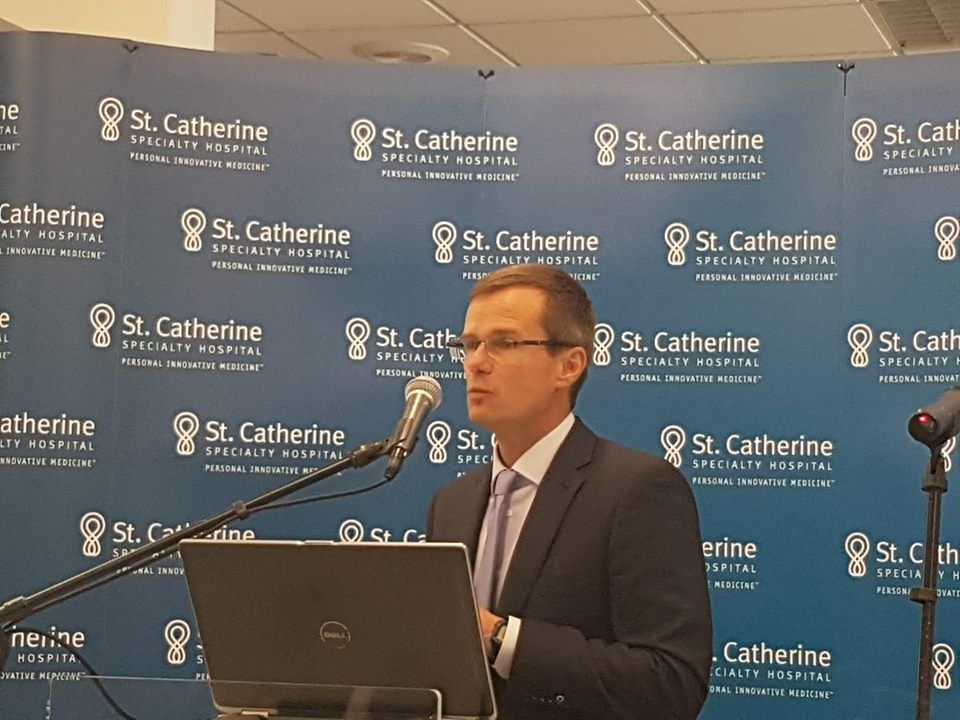
(Paul Owen, CEO of OneOme, at the Zagreb press conference)
11. Two successful companies on a unique mission: the introduction of a personalised medicine concept to clinical practice worldwide. A difficult and challenging task?
OneOme and St. Catherine are creating effective strategic partnership based on performance excellence, innovation and visionary leadership in health care. OneOme is the company with incredibly professional and dedicated people. OneOme was named one of the World’s 50 most innovative companies for 2018 by Fast Company. St. Catherine Hospital is a teaching hospital of 4 universities and the official hospital of the Croatian Olympic Committee and of the Croatian Football Federation. The Hospital is a member of the prestigious The Leading Hospitals of The World family and a first European recipient of U.S. Global Healthcare Accreditation. In addition, St. Catherine Hospital is recipient of many national and international awards including “Croatia Super-brands 2016/2017 Award”, “National Champion for Republic of Croatia in The European Business Awards”, “Ruban d’Honneur Award for Customer Focus” and by overall rating is listed among the top 10 European Companies in its category during 2016. We strongly believe that our reputation, values, dedication and vision are essential to make our mission success.

12. OneOme and St. Catherine’s relationship seems to be very unique: a brilliant model of translational medicine concept with the goal of implementing recent scientific findings in a clinical practice.
You are right: This is not a vendor-client relationship; OneOme and St-Catherine are true partners in this program. There is a mutual commitment on both sides to make a positive impact on St-Catherine Hospital’s patients, first and foremost. We intend to continue working closely with OneOme to bring about enhancements to the platform and truly fulfill the promise of pharmacogenomics. Finally, OneOme and St. Catherine’s will present the results of collaboration during the “11th ISABS Conference on Forensic and. Anthropologic Genetics and Mayo Clinic Lectures in Individualized Medicine” to be held on June 17-22, 2019 in Split. More than 650 participants with 60 invited speakers (including 4 Nobel prize laureates) all together from 50 different countries will learn more about our collaboration as well as about our unique approach of implementing the concept of personalized medicine in clinical practice.
To learn more about the OneOme RightMed test, visit the St Catherine Specialty Hospital website.

